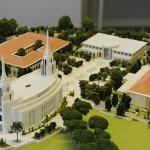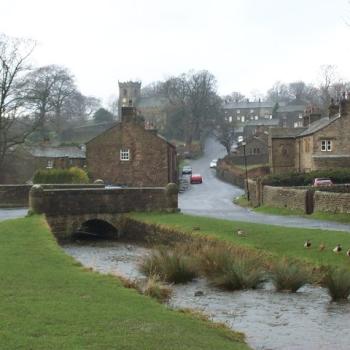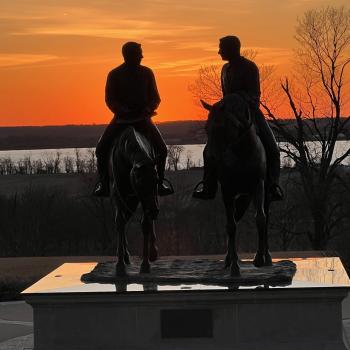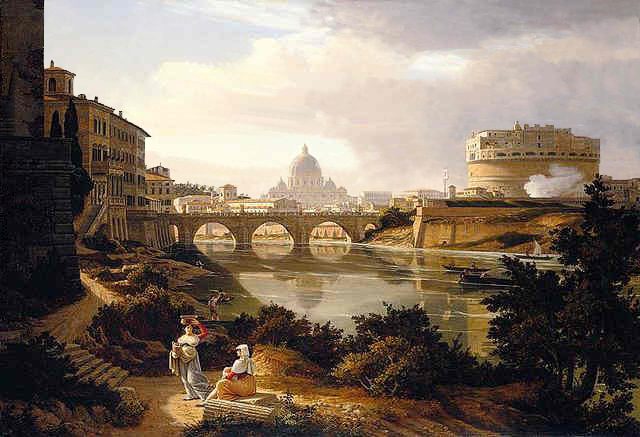
I love Rome. And, perhaps rather curiously, it is the Christian heritage of “the eternal city” that fascinates me even more than its fascinating classical history. Here are a trio of past columns that I wrote about Rome for the Deseret News:
- “Why was Peter in Rome?” (https://www.deseret.com/2014/6/12/20543095/why-was-peter-in-rome/)
- “There is much of Christian history, in stone, in St. Peter’s Basilica: St. Peter’s Basilica ranks among the greatest and most important monuments of Christian history” (https://www.deseret.com/faith/2020/2/13/21129701/daniel-peterson-there-is-much-of-christian-history-in-stone-in-st-peters-basilica-catholic-vatican/)
- “Papal conclaves offer not only pageantry but living history” (https://www.deseret.com/2013/3/10/20515760/papal-conclaves-offer-not-only-pageantry-but-living-history/)
One of my surprise favorite movies is The Scarlet and the Black, an Italian-American drama made for television, that premiered in 1983. It is based on J. P. Gallagher’s book The Scarlet Pimpernel of the Vatican, which was published in 1967, which tells the true story of Monsignor Hugh O’Flaherty, an Irish Catholic priest who, while working in the Vatican during the Second World War, saved thousands of Jews as well as escaped Allied prisoners of war.
The cast is very good – including the late great Gregory Peck (a serious Catholic in real life, whose tomb in the Cathedral of Los Angeles my wife and I have visited) as Monsignor O’Flaherty, Christopher Plummer as SS-Obersturmbannführer Herbert Kappler, and Sir John Gielgud as Pope Pius XII.
But it was the story that riveted my attention many years ago, when I first came across the movie on television while flipping through the channels one day. (It took me several years to track it down and watch it in its entirety.) It’s a story, of course, of Nazi evil, but, more importantly, it’s a story of moral courage and physical heroism and, yes, of wit.
I understand that, in some poll or other a few years ago, Gregory Peck’s Atticus Finch (from the 1962 film of To Kill a Mockingbird) was voted the greatest movie hero of all time. I’m not inclined to dispute that ranking; the scene in which Atticus exits the courtroom and all of the Black people in the balcony rise to honor him (“Miss Jean Louise. Miss Jean Louise, stand up. Your Father’s passin’”) is, to me, among the most moving scenes that I’ve ever seen in a film. Gregory Peck was a perfect choice to play Father O’Flaherty in The Scarlet and the Black. (https://www.youtube.com/watch?v=q7CX_5D6y6E)
Incidentally, Gregory Peck also provided the voice-over narration for the landmark 1999 PBS docudrama American Prophet: The Story of Joseph Smith, which was written by Heidi Swinton and produced and directed by Lee Groberg with cinematography by T. C. Christensen. And, although Mr. Peck died in 2003, his archived voice-over narration was still able – via the miracle of technology — to be used for the 2019 PBS remake of that docudrama, Joseph Smith: American Prophet, for which Mark Goodman (who has since directed the Interpreter Foundation films Witnesses and Undaunted: Witnesses of the Book of Mormon and the forthcoming Six Days in August) joined Lee Groberg as co-director and Mitch Davis (who wrote the initial screenplay for Witnesses) joined Heidi Swinton as co-writer.
When we set out to make our docudrama Undaunted, I asked our film people if they might be able to contact Gregory Peck and invite him to participate in the project. I would have dearly loved having his voice in that film. But we didn’t have enough funds in the budget to acquire his services from beyond the veil.
Another aside, about Pope Pius XII, who is portrayed in The Scarlet and the Black by Sir John Gielgud: The late Christopher Hitchens described Pius XII as a pro-Nazi pope. Mr. Hitchens wasn’t original in this. He was just repeating a common but slanderously false accusation. (Mr. Hitchens wasn’t exactly a careful scholar, and his writing was unhindered by any trace of sympathy for Christianity.) The best book on the subject of which I’m aware was written by Rabbi Dr. David Dalin, of Brandeis University. It is entitled The Myth of Hitler’s Pope: How Pope Pius XII Rescued Jews from the Nazis. The book is devastating to the charges against Pius XII.
But there’s one thing that Rabbi Dr. Dalin (perhaps understandably) doesn’t mention: After the conclusion of World War II, Israel Zolli, who had been serving as the Chief Rabbi of Rome, remarked that what the Vatican had done to save Jews would be indelibly and eternally engraved in Jewish hearts. Priests and even high prelates of the Church did things, he said, that will forever be an honor to Catholicism. In fact, after the war, Israel Zolli – remember that he was the Chief Rabbi of Rome — became a Catholic. And to honor Pope Pius XII for what the Pontiff had done for the Jews and for the role that he had played in Zolli’s own conversion, the newly baptized Catholic took as his baptismal name the name Eugenio, after the Pope’s own given name, Eugenio Pacelli.
Now, while Hitchens and others, comfortably removed by many decades from the reality of Fascist and Nazi-occupied Rome, have described Pius XII as pro-Nazi, it’s striking that the Nazis evidently didn’t feel that way. In 2007, a book appeared under the title of A Special Mission: Hitler’s Secret Plot to Seize the Vatican and Kidnap Pope Pius XII. Written by Dan Kurzman, it’s about a Nazi plot to seize Pope Pius XII and to execute him – which, of course, is what Hitler often did to his most faithful supporters. Right?
Anyway, I’m in Rome and that put me in mind of The Scarlet and the Black. I commend the movie to you.
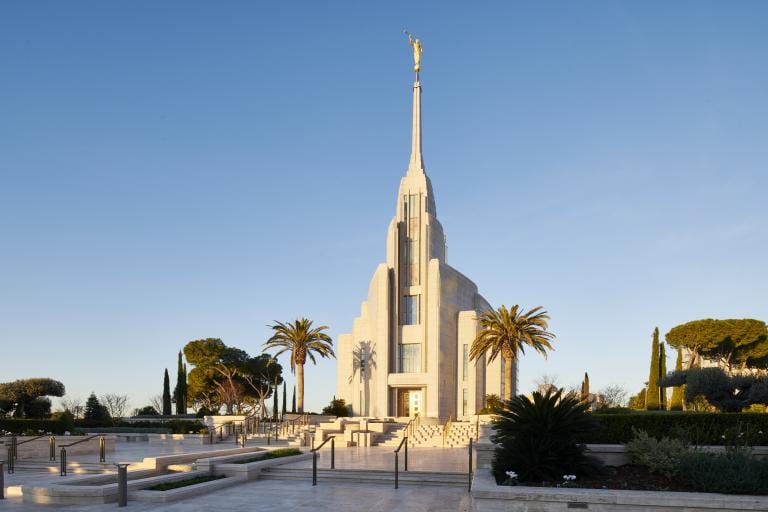
(Image from LDS Media Library)
My wife and I participated in a session this afternoon at the Rome Italy Temple. Afterwards, we visited for a while in his office with President James A. Toronto and his wife, Diane. Jim and Diane, who currently serve as, respectively, the president and the matron of the temple, are longtime friends of ours; he is a former colleague of mine in the Department of Asian and Near Eastern Languages at Brigham Young University where, like me, he taught Arabic and Islamic studies. The area covered by the Rome Italy Temple at the present time includes the Arab world, and Jim has had the opportunity to perform sealings and other ordinances in Arabic. One temple worker told me of a session the previous week that had included speakers of eight different languages. We met another temple worker who, although she lives in Italy now, is a native of Egypt; I don’t know that I’ve ever spoken Arabic in a Latter-day Saint temple before.
The taxi driver who brought us from downtown Rome, from near Roma Termini, out to the temple probably used up most of his English when he realized our destination: “American church?” he said. “Very beautiful.” I wasn’t altogether pleased that he thought of it as an “American church,” but I was happy to hear that he liked it. Jim Toronto tells me that the temple has really made an impression, locally. People drop by, he said, just to walk on the grounds. They notice and remark on the serenity of the place, which includes a complex of Church buildings of which the Temple is just one. And they ask questions. To illustrate the point: As my wife and I were leaving, Jim came out the front door with us in his white suit and tie. A young Italian man came over to ask what kind of a place this was. Jim gave him a good explanation in Italian (so far as I could tell!) and then sent him over to the very nice adjacent visitors’ center.
Posted from Rome, Italy



